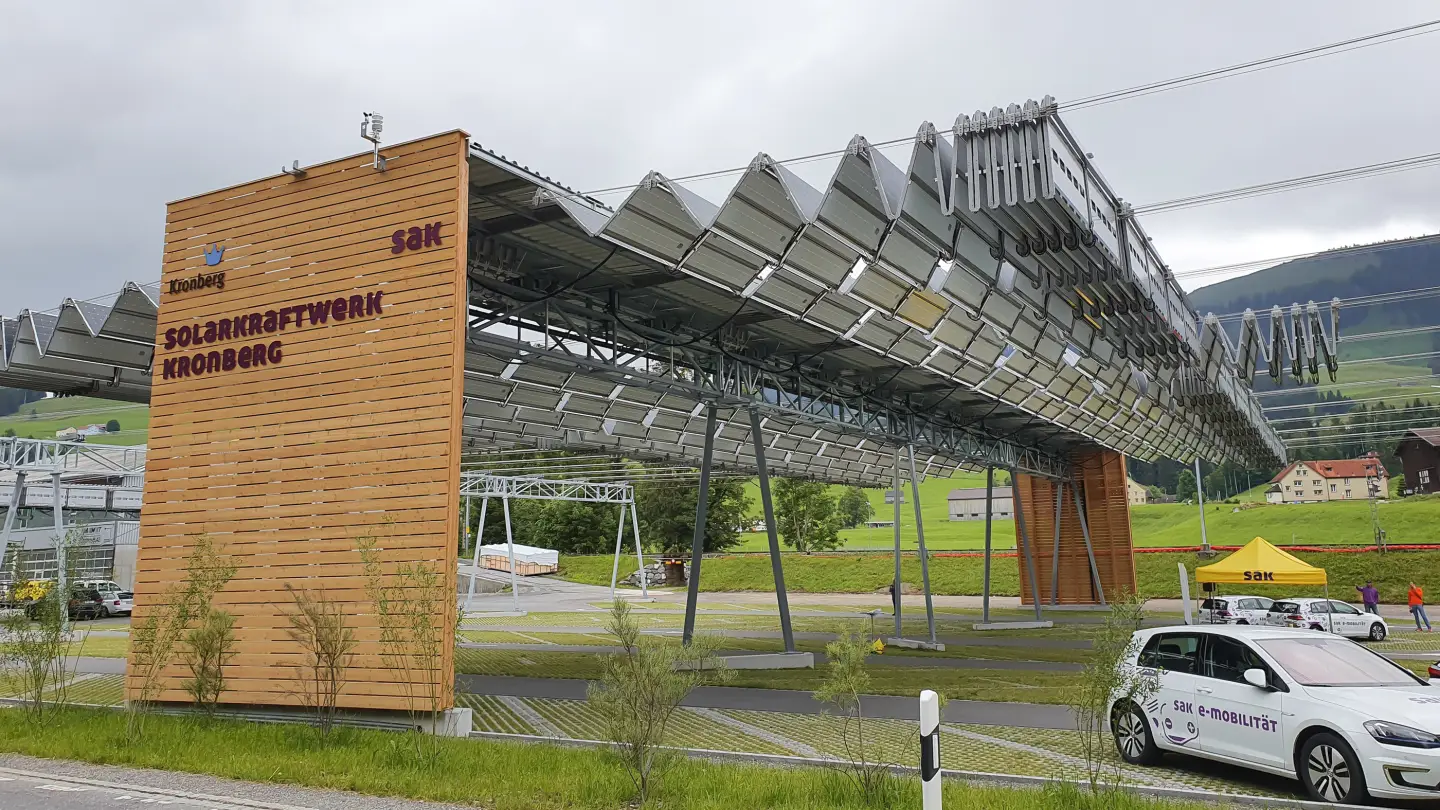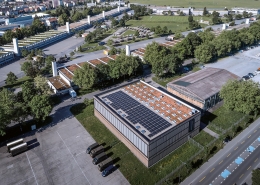Solar carports: from parking lot to power plant
Seven meters wide, three meters long, adjacent on the left and right, and usually occupied. Parking spaces do not offer vehicles any protection, but they have great potential. Carports made of solar modules already protect your car today and give the energy turnaround a new boost.
Three solar carport systems in Switzerland already show how uncovered parking spaces can be converted into solar power plants. Instead of conventional carport roofs, solar modules serve to protect vehicles from the weather and produce clean energy during the day. The latest calculations by the Swiss Federal Statistical Office in 2009 show: The potential of such installations is great. Even then, parking spaces covering the area of half of Lake Lucerne were available, and the trend is rising.
Versatile use of energy
Suitable parking areas are usually located near large electricity consumers such as supermarkets or logistics companies. These can use a large part of the electricity produced for operational maintenance. Solar carports can also be easily combined with electromobility. This means that not only parking lot operators are happy about the energy from above, but also owners of electric vehicles. Surpluses that cannot be used on site are fed into the grid and reimbursed. Profitability is only one of the reasons for Large PV systems.
Are you studying a PV system for your home or business? Use the Solar calculator from SwissEnergy and determine the potential of your future system in just a few clicks.
Different approaches in Swiss projects
The three installations in Switzerland differ from each other in their use and construction methods. The currently largest solar carport is located in the municipality of Courgenay in the canton of Jura. Several thousand vehicles belonging to the automobile logistics company Gefco are roofed here with 23,000 solar panels. The annual output of 6.7 GWh of electricity could meet the energy needs of about 1550 households. The energy suppliers EJD and BKW are involved in the project. The latter promotes a large part of the energy under the "Energy Green" product for private consumers. A smaller proportion is used locally to charge Gefco's imported electric vehicles. In addition to electricity production, Gefco focuses on the collection and recycling of rainwater.
The plant in Jakobsbad, Appenzell, is much smaller. The operators chose a peculiar approach in the construction of the plant: a lightweight folding solar roof with modules made of fiberglass-reinforced plastic not only cuts the amount of material in half, but also guarantees winter electricity thanks to snow-free modules. The installation in Appenzell is considered the first parking area in the world to be covered by a folding roof. Lightweight panels also allow wide support distances of up to 28 meters. Logistically, this is a gain, as the parking area can be used flexibly, i.e. also for trucks. On-site consumption is low, which is why the operator leases out parts of the facility to interested parties.
Self-consumption is comparatively high at the installation in Aigle (VD). More than half of the electricity is consumed by the surrounding stores. The special feature of this installation: In addition to the radiation on the front side, so-called bifacial solar modules also convert the back radiation on the rear side into electricity. Conversely, this means more yield on the same area.
Maximizing self-consumption increases economic efficiency
In addition to the investment costs, on-site self-consumption is an important factor in the economic viability of solar carports. For a system with an output of 500 kWp and investment costs of 2500 CHF/kWp, the costs will only pay off after 31 years with 30% self-consumption. With an increase of the self-consumption to 70%, the useful threshold is already reached after 20 years. Projects without self-consumption will receive from 2023 One-off subsidies of up to 60% of the investment costs. This also makes those solar carports interesting that feed the entire electricity production into the grid.
Learn more about solar carports in the study report "Solar power on parking lot roofs" by Energie Zukunft Schweiz.
This article was published on the website of SwissEnergy. Read more stories from SwissEnergy.
Picture: Cable car Jakobsbad-Kronberg AG
 Luftseilbahn Jakobsbad-Kronberg AG
Luftseilbahn Jakobsbad-Kronberg AG
 ShutterstockÖkobilanzen von Antrieben: ein Faktenblatt von EnergieSchweiz schafft einen Überblick
ShutterstockÖkobilanzen von Antrieben: ein Faktenblatt von EnergieSchweiz schafft einen Überblick  VBSVorbildliche Massnahmen zur Umsetzung der Energiestrategie 2050
VBSVorbildliche Massnahmen zur Umsetzung der Energiestrategie 2050  Benedikt VogelGeoenergie aus sicheren Felszonen
Benedikt VogelGeoenergie aus sicheren Felszonen  Adrian MoserPilotprojekt «Geospeicher»: Winter-Energievorrat im Stadtberner Untergrund
Adrian MoserPilotprojekt «Geospeicher»: Winter-Energievorrat im Stadtberner Untergrund 


Neuste Kommentare